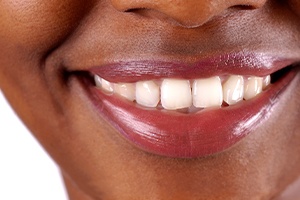
Periodontal Therapy
Healthier Gums for a Healthier Body

It is not a foregone conclusion that we must lose teeth as we age. If we maintain good oral hygiene and attend regular professional cleanings and oral examinations, it is likely that we can keep our natural teeth for a lifetime. That involves more than just caring for the teeth themselves; we must also pay attention to structures that surround them: the gums and tooth-supporting bone. Gum disease, a type of infection, threatens these supporting tissues. That is why dental professionals are always on the lookout for early signs that patients may not notice. If signs of trouble become apparent in your mouth, we may suggest that you undergo periodontal therapy with our East Hartford, CT dental office team.
Why Choose Comprehensive Dental Associates of Central Connecticut for Periodontal Therapy?
- Non-surgical and surgical treatments available
- Thorough but conservative care
- On-staff specialists
Periodontal Therapy Procedures

Periodontal therapy can include both surgical and non-surgical treatments to restore health to the gums and bones that support the teeth. We offer the following types of periodontal therapy:

Scaling and Root Planing
Scaling and root planing is basically a deep cleaning of the mouth; it is often the best starting point to control gum disease. During the procedure, we remove plaque and calculus (tartar) from below and above the gum line, using hand scalers and/or ultrasonic instruments.

Gum Grafting
In some cases, it is necessary to replace lost gum tissue so that tooth roots are adequately protected. This can be accomplished by taking healthy gum tissue from one area of the mouth and grafting it onto a place where it is needed. It may also be possible to use laboratory-processed donor tissue for this procedure.

Periodontal Plastic Surgery.
When used to describe surgery, the word “plastic” refers to any procedure that improves aesthetics. We can reshape the gum tissue to create a more pleasing appearance.

Periodontal Laser Treatment
Using lasers to remove disease gum tissue offers some significant advantages over traditional surgery. For example, lasers reduce both bleeding and gum shrinkage.

Crown Lengthening Surgery
If excess gum or bone tissue cover your teeth, we may need to remove it. This surgical procedure is often carried out for cosmetic reasons (to make the teeth look longer and create a more proportionate smile), or it may be necessary to secure a new dental crown.

Dental Implants
If you have lost one or more teeth, you may be eligible for dental implants —today's preferred method of tooth replacement. An implant is placed beneath the gum line and into the jawbone during a minimally invasive surgical. The implant supports a realistic-looking dental crown that is visible above the gum line and is virtually indistinguishable from a natural tooth.
Your Role in Periodontal Health

Of course, there are some areas of the mouth that toothbrushes and floss simply cannot reach, which is why attending regular professional cleanings at the dental office is so important. Your routine dental exam is also a time when we can detect early signs of gum disease — even before they become apparent to you.
Eating a nutritious low-sugar diet, and avoiding any type of tobacco use, will also promote your periodontal health — and increase your chances of keeping your teeth for life.
Understanding Gum (Periodontal) Disease

Most people do not think much of it when their gums bleeding during brushing and flossing. However, this commonly overlooked issue is actually an early indicator of gum disease.
The Link Between Heart & Gum Diseases
